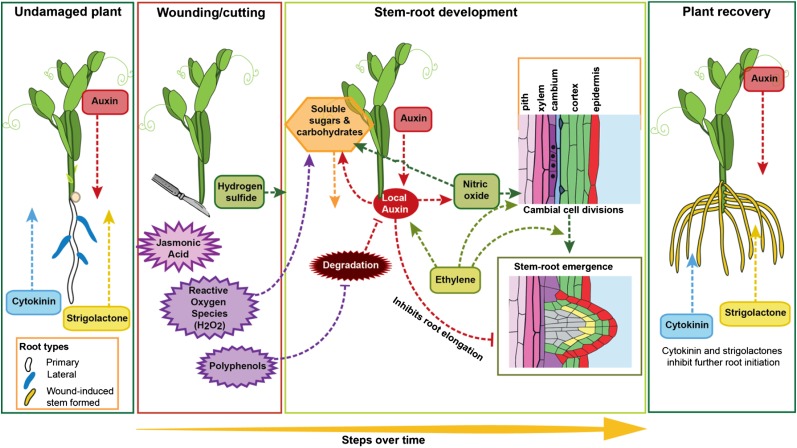Figure 4.
Adventitious root formation on cuttings. In intact plants, cytokinin and strigolactones are predominantly produced in the root, while auxin is predominantly produced in the shoot. On wounding, jasmonic acid peaks within 30 min and is required for successful root development. Reactive oxygen species, polyphenols, and hydrogen sulfide also increase and promote adventitious rooting. Polyphenols do this via reducing auxin degradation. Auxin builds up in the base of the cutting, acting upstream of nitric oxide to promote adventitious root initiation. Auxin, nitric oxide, and hydrogen peroxide (H2O2) increase soluble sugars, which can be used for root development. Furthermore, levels of root initiation inhibitors (cytokinin and strigolactone) are reduced with the removal of the original root system. At later stages, auxin inhibits primordia elongation while ethylene promotes adventitious root emergence. As the new root system establishes, the production of cytokinin and strigolactones is restored. Pointed arrows represent positive interactions, and flat-ended arrows represent negative interactions. Yellow roots are adventitious roots, the white root is a primary roots, and blue roots are lateral roots.

